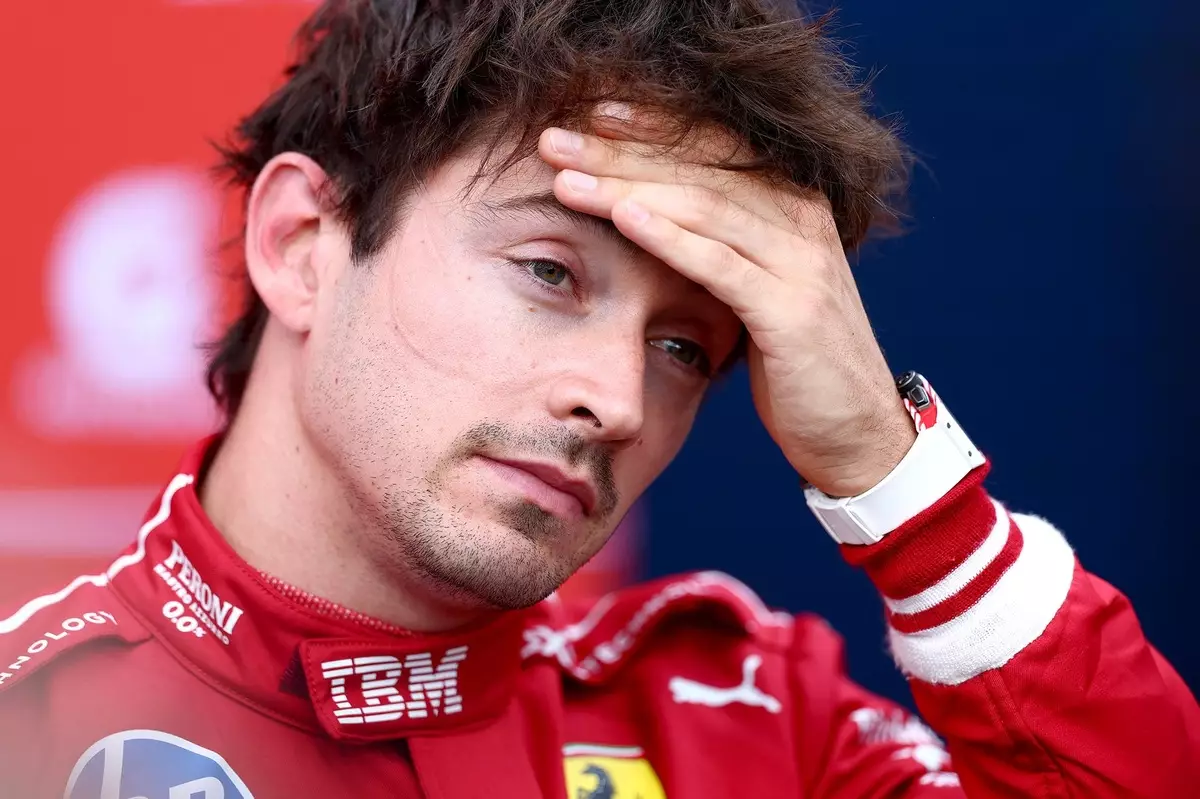Ferrari’s 2023 campaign has been an ongoing rollercoaster—full of fleeting moments of brilliance overshadowed by persistent underperformance. The Belgian Grand Prix’s sprint race exemplifies this pattern perfectly: a promising start quickly diminished as the team’s ambitions dissolved into mediocrity. Charles Leclerc’s initial heroics, gaining third place on the first lap, suggested that the team might find some level of competitiveness. However, the subsequent decline, with Leclerc dropping back and finishing more than ten seconds behind the race winner, highlights the persistent gap between Ferrari and the top contenders, particularly Red Bull and McLaren.
This pattern of starting strong and fading fast reveals a deeper structural issue—one rooted not merely in car performance but in the fundamental approach to innovation, risk, and adaptation. Ferrari appears to be caught between the desire to upgrade and a reluctance to truly push the boundaries. Their recent attempts at circuit-specific adaptations and aerodynamic tweaks seem more like band-aid solutions rather than a concerted effort to overhaul their competitive edge. The team’s hope that incremental upgrades will close the gap seems increasingly misplaced, especially when the results remain stubbornly consistent with a mid-field level of performance.
The Illusion of Progress and the Cost of Complacency
Ferrari’s recent upgrade package, including a new underfloor and rear suspension tweaks, has been met with mixed reactions. While the drivers express positivity, the tangible impact on pace has been minimal at best. This disconnect underlines a critical flaw: the inability to convert technical developments into meaningful performance gains. The upgrades, although extensive in scope, suggest a pattern of cautious evolution rather than revolutionary innovation.
This cautious approach is problematic. Formula 1 is a sport where going “small step at a time” can often leave teams behind, especially when rivals like Red Bull and McLaren are willing to take calculated risks. Ferrari needs to evaluate whether their current strategy of incrementalism is enough to keep pace or if they should embrace more daring, potentially disruptive ideas—risking mistakes but gaining ground in the process.
The misunderstanding of the impact of these upgrades is compounded by criticism and self-doubt within the team. Lewis Hamilton’s comments about his own upgrades and the apparent confusion surrounding Ferrari’s recent modifications reflect a broader frustration with the pace of progress. Ferrari’s hesitance to make bold moves might be rooted in fear of failure, but what’s more damaging is the risk of becoming irrelevant if they don’t progressively challenge the existing order.
Innovation vs. Complacency: The Path Forward
The core issue for Ferrari is not just technical but strategic. They need to accept that greatness often involves uncomfortable steps—revolutionary ideas, bold experimentation, and even risking mistakes. Merely tinkering at the edges, relying on minor upgrades, will likely never bridge the gap to Red Bull’s dominance. If Ferrari wants to transform from a team that does well during certain weekends to one that consistently challenges for championships, it must embrace radical innovation.
This means investing heavily in research, testing unconventional ideas, and being willing to accept setbacks. The current mindset appears too conservative, possibly driven by a fear of repeating past failures or damaging their reputation. But in a sport that rewards daring over caution, Ferrari’s reluctance to push boundaries could be its undoing.
What Ferrari needs is a cultural shift—one that redefines what success looks like. They must understand that in Formula 1, the greatest achievements come from those willing to take calculated risks, learn from failures, and relentlessly pursue progress. Until they muster the courage to abandon some of their cautious tendencies, they will continue to fall behind, watching competitors capitalize on their own innovative leaps.
Ferrari finds itself at a crossroads: continue with incremental upgrades and hope for the best, or embrace a bold, revolutionary path toward competitiveness. The current strategy, evidenced by the Belgian GP weekend, suggests that playing it safe will not suffice. To reclaim their former glory, Ferrari must ignite a spirit of daring within their engineering and management teams—be willing to challenge conventions, accept setbacks as learning opportunities, and relentlessly push forward.
In the fiercely competitive world of Formula 1, resting on laurels or clinging to cautious optimism is a recipe for stagnation. The next few races will be telling—will Ferrari summon the courage to innovate drastically, or will they remain spectators in a championship they once dominated? The choice may define the future of their racing program, and if they choose boldness, it could be the beginning of a new chapter rooted in resilience and audacity.


Leave a Reply